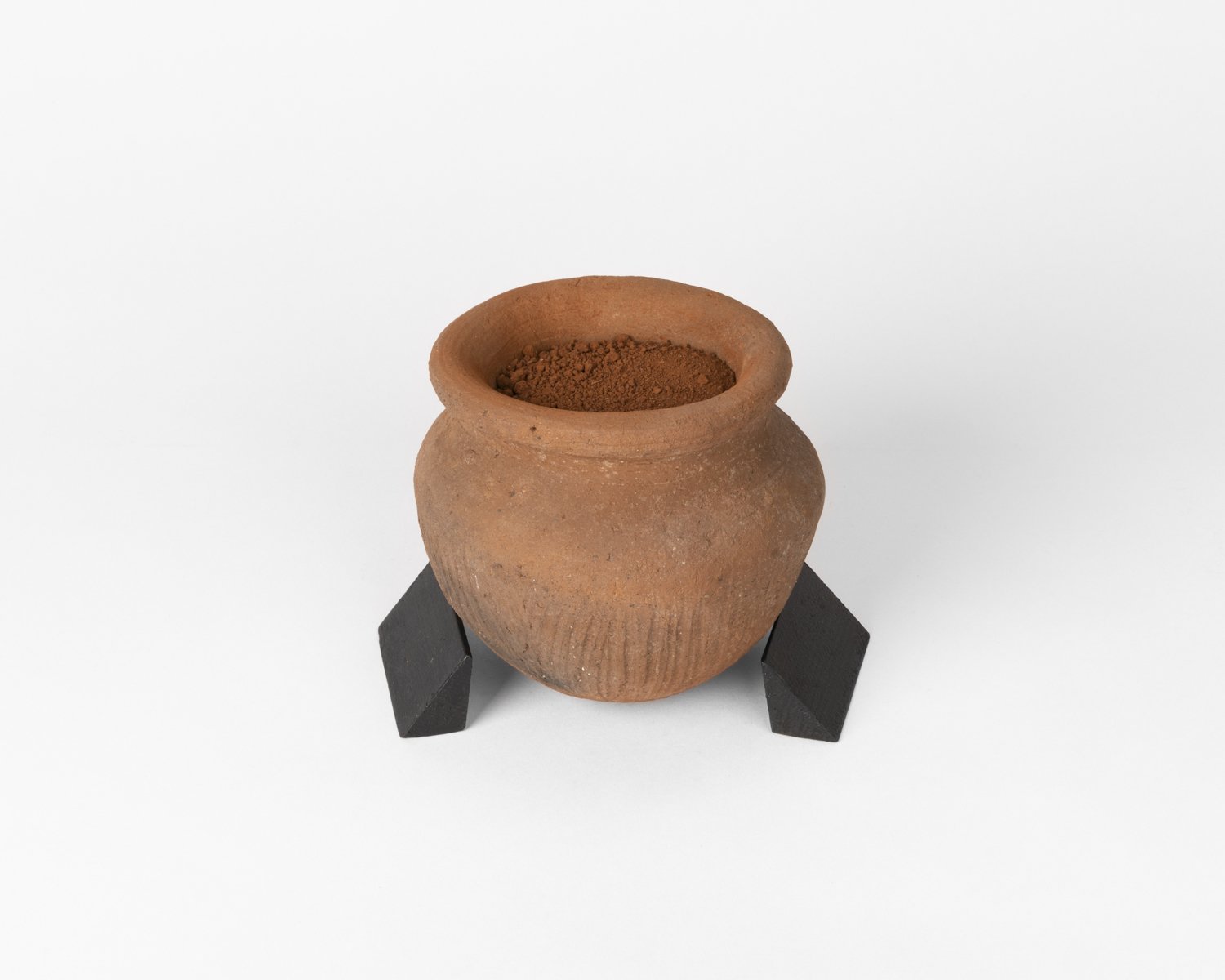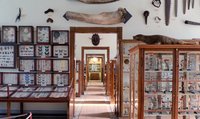Gedrungenes Tongefäß in bauchiger Form ohne Standring. Das Gefäß ist angefüllt mit roter Erde, die laut Inventar aus Moshi am Kilimandscharo stammen soll. Das Gefäß wurde vermutlich im ehemaligen Deutsch-Ostafrika, wohl um 1900 gefertigt. Es ist aus dem ehemaligen Besitz des Fürstenhauses von Schönburg-Waldenburg, vermutlich von einer Afrikareise Anfang 20. Jh. mitgebracht. Der Keramiktopf, in Maa “Moti ongulukoki” wird in seiner typischen Form bis heute in Tansania und Kenia so hergestellt. Er dient zum Aufbewahren von Essen und zum Zubereiten von Körpermalfarbe, heute zunehmend auch als Dekoration. Die rote Erde im Topf heißt auf Maa “Orukaria” und dient den Maasai-Moranis ("Kriegern") als Schminke. Mit Wasser angerührt ergibt sie die rot-ockerne Farbe, mit der sich Maasai, Samburu und andere Völker schmücken und anmalen.
en

